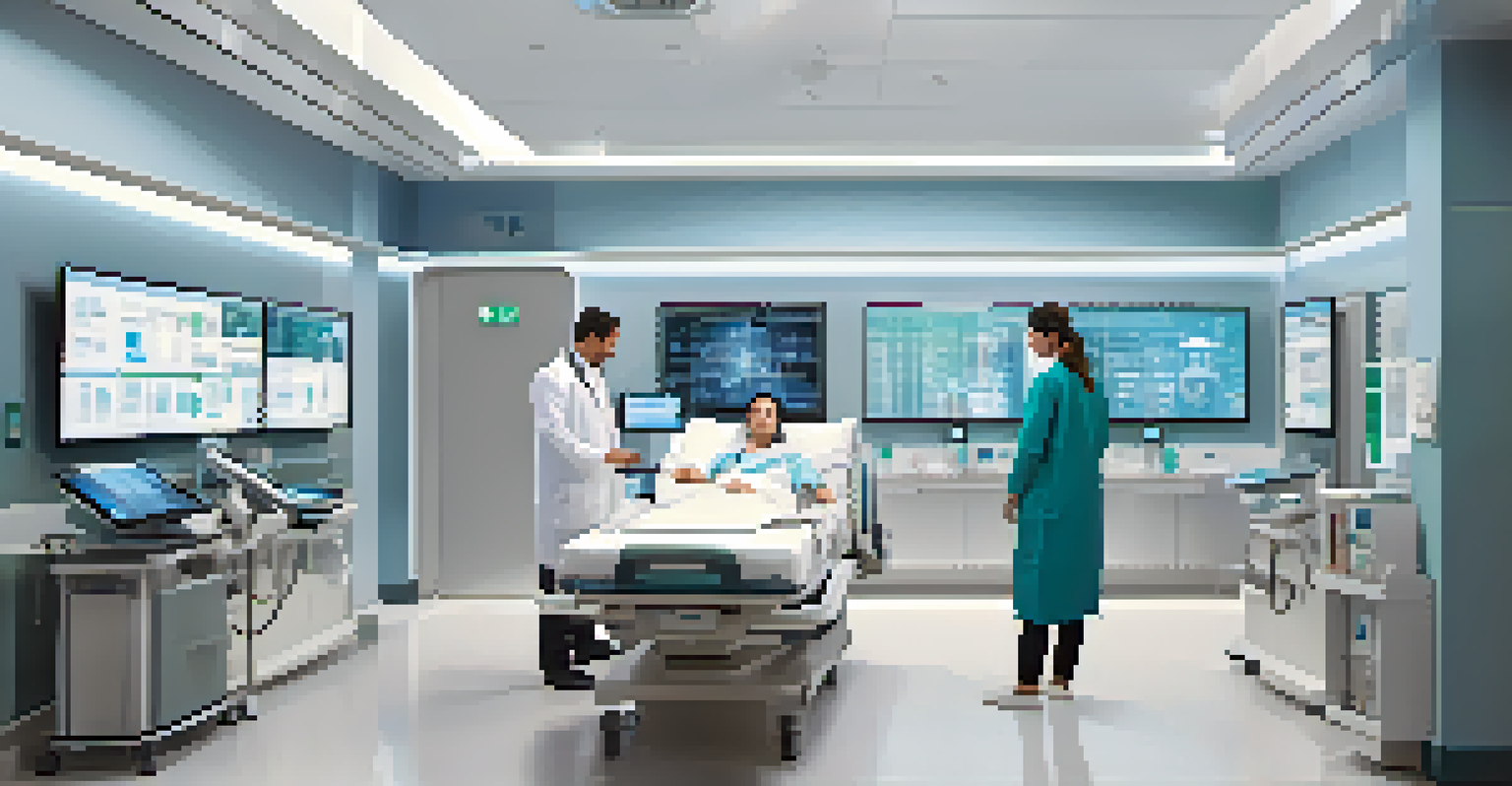Digital Twin Use Cases Across Various Industries

Understanding Digital Twins: Definition and Basics
Digital twins are virtual replicas of physical objects or systems, allowing real-time monitoring and analysis. Imagine having a digital doppelgänger of your car that tracks its performance and health; that's a digital twin in action. This technology bridges the gap between the physical and digital worlds, enabling businesses to optimize operations effectively.
Digital twins are changing the way we design and operate systems, allowing companies to harness the power of data for better decision-making.
The concept of digital twins originated in manufacturing but has since expanded to other industries. They can simulate everything from a factory's production line to an entire city’s infrastructure. By leveraging data from sensors and IoT devices, digital twins provide insights that improve decision-making and predictive maintenance.
In essence, digital twins help organizations visualize and understand complex systems, making it easier to identify inefficiencies and innovate solutions. As industries continue to evolve, the applications of digital twins are proving to be both versatile and transformative.
Manufacturing: Streamlining Production Processes
In manufacturing, digital twins play a crucial role in optimizing production processes. For instance, a company can create a digital twin of its assembly line to monitor real-time performance and detect bottlenecks. This allows for immediate adjustments, reducing downtime and increasing overall efficiency.

Additionally, manufacturers can simulate different scenarios using digital twins, such as changes in production schedules or material flows. By analyzing the outcomes of these simulations, they can make informed decisions that enhance productivity. It's akin to playing a video game where you can test strategies before committing to action.
Digital Twins Optimize Operations
Digital twins create virtual replicas of physical systems, allowing organizations to enhance efficiency and make data-driven decisions.
As a result, digital twins not only enhance operational efficiency but also contribute to cost savings and improved product quality. In an industry where margins can be thin, these advantages are invaluable.
Healthcare: Improving Patient Outcomes and Operations
The healthcare sector is increasingly adopting digital twins to improve patient care and operational efficiency. By creating digital replicas of patients, healthcare providers can tailor treatments based on individual health data. This personalized approach can lead to better outcomes and more efficient use of medical resources.
The future of urban living lies in our ability to create smart cities powered by digital twins that enhance efficiency and sustainability.
Hospitals are also using digital twins to manage their facilities more effectively. For example, a hospital can create a digital twin of its entire building to optimize patient flow and resource allocation. This proactive management helps to alleviate congestion and improve the patient experience.
Furthermore, digital twins can simulate the spread of diseases, allowing health officials to devise effective containment strategies. In this way, digital twins serve as a powerful tool for both individual patient care and public health management.
Smart Cities: Enhancing Urban Planning and Management
Digital twins are revolutionizing urban planning by providing city planners with a comprehensive view of urban systems. Imagine a city that can simulate traffic patterns, energy usage, and waste management in real-time; that’s the power of a digital twin. This technology enables planners to make data-driven decisions that enhance city living.
For instance, cities can use digital twins to test the impact of new infrastructure projects before implementation. By simulating changes to traffic flow or public transport routes, planners can identify potential issues and address them proactively. It's like having a crystal ball that can predict the future of urban mobility.
Industry Applications Are Diverse
From manufacturing to healthcare, digital twins are transforming various sectors by improving performance, safety, and customer experience.
As urban populations continue to grow, the need for efficient city management becomes crucial. Digital twins are not just tools; they are essential allies in creating sustainable and livable urban environments.
Energy Sector: Optimizing Resource Management
In the energy sector, digital twins are transforming how companies manage resources and predict maintenance needs. For example, a wind farm can develop a digital twin of its turbines to monitor performance and forecast energy production. This level of insight allows for proactive maintenance, minimizing downtime.
Moreover, energy companies can simulate various scenarios, such as fluctuations in demand or changes in energy sources. By analyzing these simulations, they can optimize their operations and resource allocation. It’s much like playing chess, where anticipating your opponent's move can lead to a winning strategy.
As the energy landscape shifts towards sustainability, digital twins will be instrumental in ensuring that operations are efficient and environmentally friendly.
Aerospace: Enhancing Safety and Performance
The aerospace industry leverages digital twins to ensure safety and enhance aircraft performance. By creating digital twins of aircraft, manufacturers can monitor real-time data related to flight conditions and engine performance. This continuous monitoring helps in identifying potential issues before they become critical.
Additionally, airlines can use digital twins to optimize flight schedules and maintenance routines. By simulating different flight paths and conditions, they can analyze fuel efficiency and passenger flow. It's akin to a pilot practicing in a flight simulator before taking to the skies.
Real-Time Insights Enhance Management
By providing real-time monitoring and analysis, digital twins help industries like energy and construction manage resources and projects more effectively.
Ultimately, digital twins contribute to safer, more efficient air travel, allowing for better resource management and improved passenger experience.
Retail: Personalizing Customer Experience
In the retail sector, digital twins are helping businesses understand customer behavior and enhance the shopping experience. By creating digital replicas of customer interactions, retailers can analyze purchasing patterns and preferences. This data enables them to tailor marketing strategies and product placements to better meet customer needs.
For example, a clothing retailer can use digital twins to simulate how different store layouts impact customer flow. This insight allows them to design stores that maximize engagement and sales. It’s like rearranging your living room to create a more inviting space for guests.

Moreover, as e-commerce continues to grow, digital twins can help retailers optimize their online sales strategies by analyzing customer journeys. By personalizing the shopping experience, retailers can increase customer loyalty and drive sales.
Construction: Enhancing Project Management and Safety
The construction industry is increasingly adopting digital twins to improve project management and safety. By creating digital replicas of construction sites, managers can monitor progress in real-time and identify potential hazards. This proactive approach enhances safety and reduces project delays.
For instance, a construction company can simulate different construction scenarios to optimize workflows and resource allocation. By visualizing the impact of changes, they can make informed decisions that save time and costs. It’s similar to using a blueprint to plan a building but with the added advantage of real-time data.
As projects grow in complexity, the ability to visualize and manage every aspect of construction through digital twins becomes essential. This technology not only enhances efficiency but also fosters a culture of safety and accountability.